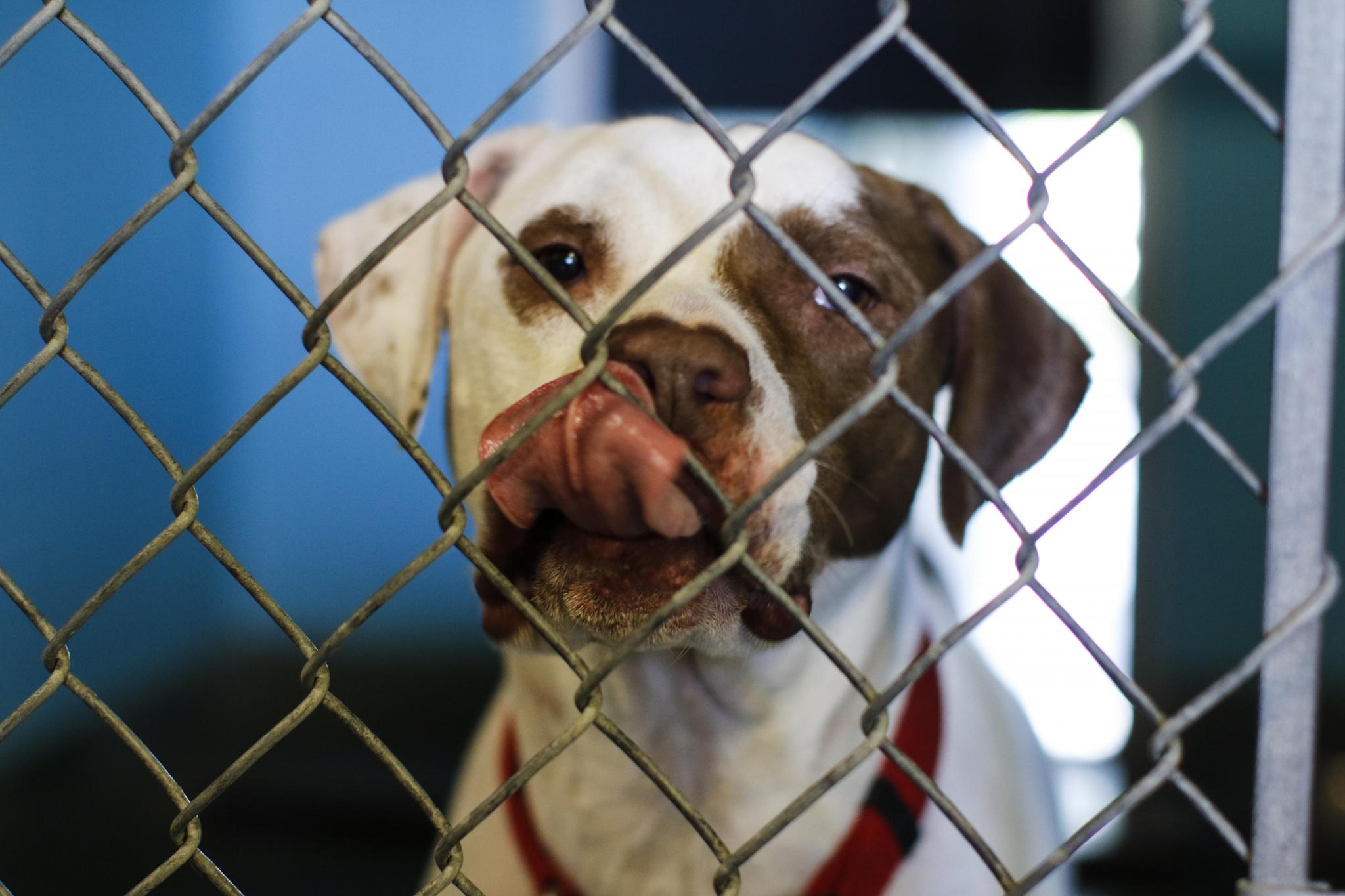
Shelter pets are awaiting their “forever” homes. Daily Record file photo
How do you move to ‘no kill?’
In recent months, residents have been speaking out during public comments at city and county meetings about why the San Marcos Regional Animal Shelter should move toward no-kill status. The grassroots group Hays Animal Advocates has an 11-point plan for the shelter to become no-kill, but shelter officials have said more space and staff are needed to begin taking steps in that direction.
According to the shelter’s end-ofyear report from Fiscal Year 2017, 2,049 of the 4,642 animals taken in were euthanized — 69.2 percent of cats, 25.9 percent of dogs and 44.14 percent overall. Just up the interstate, the Austin Animal Center is the largest no-kill shelter in the country, with live outcomes of between 90 and 99 percent. What did it take for Austin’s shelter to go no-kill, and how can San Marcos follow suit?
Government support
Lee Ann Shenefiel, interim chief animal services officer with the Austin shelter, said Austin’s move toward nokill began almost 10 years ago. In the last decade, she noted, attitudes toward animal welfare have changed.
“We’ve seen communities around the country be able to save large numbers of animals,” she said.
The Austin shelter provides shelter to more than 18,000 animals each year. Like the San Marcos shelter, the Austin facility takes in animals from all of Travis County. And, as in San Marcos, the drive to become no-kill began with concerned members of the community and a nonprofit group that petitioned city council. In 2010, Shanafiel said, the city of Austin passed a resolution to set a goal of at least 90 percent live outcomes at the animal shelter. A stakeholder group got together and formulated a 34-point plan that included policy changes and new programs.
“It was both about keeping animals out of the shelter who don’t need to be there … and about getting animals out of the shelter as quickly as possible,” Shanafiel said.
Though advocates are pressing for one, there has not been any official resolution stating that the San Marcos shelter will set a goal of 90 percent outcomes. Some members of the public have asked shelter officials themselves to announce that they want to become no-kill. In July, the San Marcos Animal Shelter Advisory Board approved a letter to city officials throughout the county asking for additional funding in the upcoming budget to help pay for staff and for more space to help accommodate more animals.
Shanafiel said that local governments can “right-size” budgets for animal shelters to help take care of animals longer — many shelters are not sufficiently funded to provide for animals for the length of their lives — but that funds don’t necessarily correspond with success.
“There’s no true correlation between the size of budget and the number of lives that can be saved,” she said.
Shanafiel did note that there are grants and other funds available for shelters — though they are highly competitive — that could be used as seed money to start a program that government entities might decide to fund long-term if it proves successful.
Money-saving measures
The Austin shelter’s 34-point plan included programs to help keep animals out of the shelter in the first place. One of the steps in reducing shelter intake was developing a robust foster program.
“It’s a vital component,” Shanafiel said.
There are many benefits to a foster program, including community engagement, increasing space capacity at shelters and freeing up shelter staff by letting foster program participants perform adoption placements, Shanafiel said.
Foster programs are perfect for animals that are very old, very young, suffering from medical issues or are otherwise stressed out in a shelter environment.
“The shelter can be a dangerous place for some animals,” Shanafiel said.
The San Marcos shelter has started a foster program and recently opened it up to members of the public. For more information on the San Marcos shelter’s volunteer training and foster program, visit http://sanmarcostx.gov/1232/Foster-Program.
The Austin shelter has other programs in place to keep some pet owners from having to surrender their animal companions, Shanafiel said. The shelter has a “friends” group that can offer limited financial assistance to pet parents who are considering surrendering their animals because they can’t afford medical care. Families who have a dog that keeps breaking out of its enclosure or yard can talk to the shelter about performing repairs rather than giving up their dog. Shanafiel said it is cheaper to spend $250 to repair a fence than to take care of a dog for the rest of its life.
The shelter also works with people who find lost dogs and encourages them to keep the dogs in their homes rather than dropping them off at the shelter, Shanafiel said, noting that lost animals are more likely to be reunited with their humans if they stay near their homes.
Among the no-cost measures shelters can take is reaching out to community members to volunteer, as the San Marcos shelter has done. Simple steps like being open during times when the public can get to the shelter and keeping customer service principles in mind when greeting potential adopters can also help animals find their forever homes, Shanafiel said.
In addition, Shanafiel said, the Austin shelter practices open adoptions, which makes it easier for people to adopt pets.
“It’s really about eliminating barriers that prevent good potential pet adopters from adopting a pet,” she said.
Among the open adoption practices are making requirements less strict. Shanafiel said some shelters require a certain income level or that a couple be married before taking in a pet.
“None of that leads to better adoptions,” she said.
rblackburn@sanmarcosrecord.com
Twitter: @arobingoestweet











